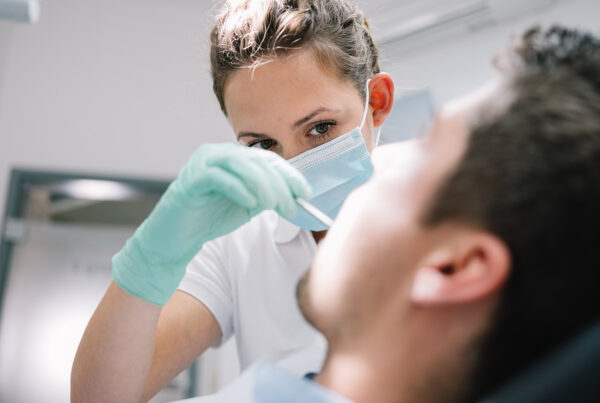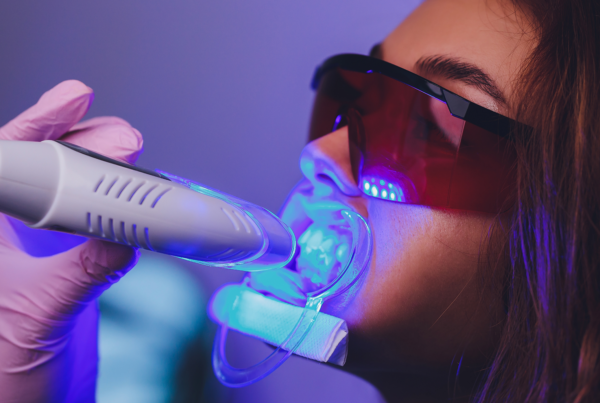Bleaching vs. Whitening: What’s the Difference?
Whitening and bleaching are frequently used interchangeably in the practice of making teeth whiter. However, there is a huge difference between the two terms. The difference between bleaching and whitening is based on the dental products and how the practice is done.
Here is a real difference between bleaching and whitening to simplify it all for you: Teeth whitening uses products and practices that remove surface stains, thus restoring the natural shade of your teeth.

When it comes to tooth bleaching, it’s an advanced step of teeth whitening where chemical agents lighten up the tooth’s enamel colors, making it shine beyond the natural color limits.
What Causes Tooth Staining?
Teeth whitening and bleaching are typically done to remove tooth stains. So, what are the causes of tooth staining?
First and foremost, discolored teeth can be due to lifestyle routines. For example, drinking tea, coffee, wines, colas and eating starchy food like potatoes and pastes causes teeth staining. Tobacco use also has the potential to stain teeth.
Generally, poor dental hygiene is the number one cause of teeth staining. The plaque and food stain areas you frequently ignore when brushing and flossing your teeth.
Diseases affecting normal tooth enamel and dentin development can lead to tooth staining. Due to ionization processes, treatment procedures like neck radiation and chemotherapy can lead to tooth discoloration.
Medications like doxycycline and tetracycline antibiotics cause color changes in the teeth in developing children. Rinsing your mouth with chemicals like cetylpyridinium and chlorhexidine can cause tooth discoloration. Antihistamines, antihypertensive, and antihistamines also have the potential to stain your teeth.
Of course, aging, genetics, environment and trauma affect the tooth pulp and enamel to cause tooth staining. For example, staying in environments with high fluoride levels will cause tooth fluorosis after drinking the region’s water for a long time.
Generally, teeth staining can be due to either extrinsic or intrinsic causes. Extrinsic causes of discoloration include food dyes, coffee, red wine, tea and tobacco. They can be treated with whitening tubes of toothpaste targeting exterior stains.
The the causes of teeth discoloration include infections, tooth trauma, aging, medications and childhood illnesses. They are managed with professional bleaching.
What are the Options for Whitening?
Teeth whitening options include in-office professional whitening, home treatment by the dentist or the use of over-the-counter or homemade products without the dentist’s oversight.
Discuss the best teeth whitening option with your dentist before trying. A professional will create a proper treatment plan and give you the best recommendation to easily address your needs.
Risks of Teeth Whitening
Increased teeth sensitivity
Teeth whitening makes your teeth more sensitive. You will experience it on the first and second treatment, but in subsequent visits, it will decrease. Dentists prescribe sodium fluoride gel and potassium nitrate to treat tooth sensitivity.
Gum Irritation
Gingival irritation is common with teeth whitening. Gum irritation occurs when the whitening products come in contact with your gums. The effect fades away after the treatment.
How Much Does Teeth Whitening Cost?
Professional teeth whitening is more expensive than home-based treatments. In-office teeth whitening usually costs between $450 and $1,000.








